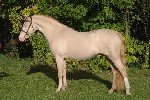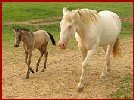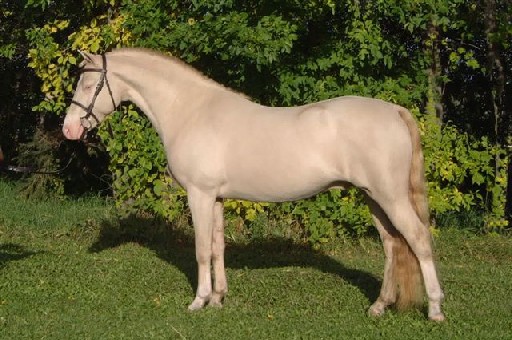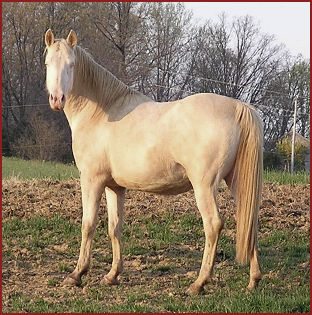smoky cream





You have Shirley Brand to thank for this page on smoky cream horses. She rightly complained that they don't get the recognition they deserve, and when you see her smoky cream "The Key" you know this isn't a colour to be ignored! The lack of recognition is partly because they are often classified as perlino, or sometimes called smoky perlino. Partly it's because there don't seem to be too many of them about. Now though, especially with genetic testing available for both the extension locus and the cream gene, those are just excuses. After all we don't classify blacks with the bay or brown horses. So here we go...
Cream dilution has a very subtle effect on black pigment and horses with a black base color are diluted to smoky black when heterozygous for the CCr allele and smoky cream when homozygous for the allele. Smoky black horses may be very difficult to identify and may look bay, brown, liver chestnut or faded black. They are sometimes called dilute black (especially in the UK) or black buckskin. Like the other cream horses smoky cream horses have cream coats with pink skin and blue or glass eyes. They often have a very attractive coffee colored hue. Rather like coffee with a lot of cream poured in, or cream mixed with a little coffee! Their mane, tails and points may be coffee colored, yellowish, smoky blue or sooty. If they are not white (due to socks or other white markings) the lower legs may be a darker shade than the body.
Cream horses are sometimes called pseudo-albinos. In other animals (including humans) there are recessive alleles at the C locus that cause true albinism. Individuals homozygous for these alleles lack pigment in the hair, skin and eyes, which is certainly not the case for smoky cream horses, or cremello or perlino horses either. True albinos have pink eyes as well as pink skin (due to the effect of the blood vessels beneath the surface). Albinism is also often accompanied by various congenital defects. No true albino horses have ever been observed and presumably they are inviable (i.e. die in utero). Cream horses have traditionally been shunned by some breeders and breed authorities, but are now gaining increased acceptance, thanks in part to the efforts of the Cremello & Perlino Educational Association (CPEA). Their research and campaigning helped to finally get the American Quarter Horse Association’s rule against the registration of cream horses withdrawn in 2003 (rule 227(i), formerly 227J). Under this rule cremello, perlino and smokey cream foals couldn’t be registered as pure-bred American Quarter horses even if the sire and dam were AQHA registered pure-bred champions with other AQHA registered foals. In the UK The Cremello Society - set up to promote the recognition and appreciation of cream horses - was officially registered in 2004. The Society provides a registry for all dilute colors of the cream gene, both the single and double dilutes. |








